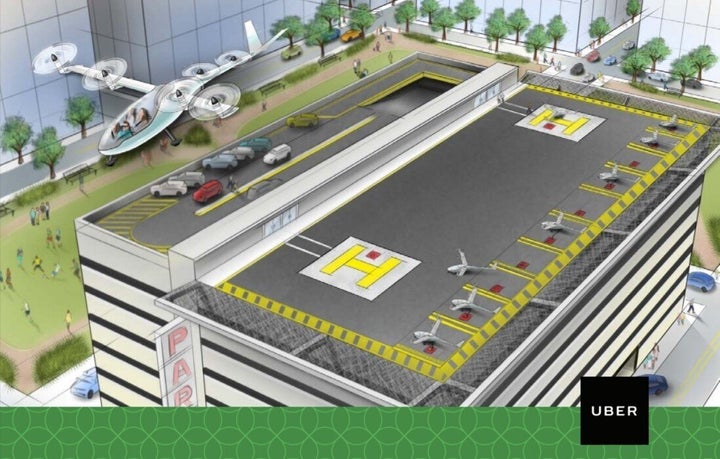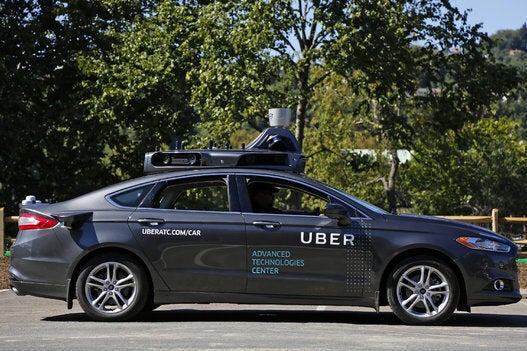Commuters could be flying to work in electric vehicles within a decade if business and government work together to make it happen, ride-hailing company Uber says.
In a 99-page report released this week, the company that has already revolutionized urban transportation made it clear it has much larger ambitions in mind: A service called "Uber Elevate" that uses a fleet of electric vertical take-off and landing (VTOL) vehicles that put an end to slow commutes on gridlocked roads.

The research paper says more than a dozen companies around the world are working on the technology. One of those companies is Airbus, the European airliner manufacturer, which is working on urban air transport prototypes at its Silicon Valley facility.
“VTOL aircraft will make use of electric propulsion so they have zero operational emissions and will likely be quiet enough to operate in cities without disturbing the neighbors,” the report says.
And it will “likely have significant cost advantages over heavy-infrastructure approaches such as roads, rail, bridges and tunnels.”
“Our intent is to help the industry get there faster.”
— Jeff Holden, Uber product chief
New "vertiports" and "vertistops" could be built on building rooftops and on open spaces near freeway interchanges. Routes would be flexible, reacting to traffic conditions.
“As costs for traditional infrastructure options continue to increase, the lower cost and increased flexibility provided by these new approaches may provide compelling options for cities and states around the world,” Uber said.
The company isn’t planning to do the work all by itself. Rather, the research paper is meant to spur governments and business into getting behind the idea.
“Our intent is to help the industry get there faster,” Jeff, Holden, Uber’s product chief, told Wired magazine.
The company even estimated costs for commuting by VTOL aircraft.
An 88.5-km (55-mile) trip from San Francisco’s Marina district to downtown San Jose would take you one hour and 40 minutes in an UberX today, costing US$111.
A flight between the two would take 15 minutes and cost $129 initially, falling in the near term to $43 per trip and to $20 per trip in the long run. Like with most other new consumer technologies, Uber sees prices coming down as more and more people adopt it.

The report sees a number of challenges that need to be addressed to make the idea a reality. Among other things, electric batteries need to improve further in order to power small aircraft.
Safety issues would also be a concern for the public, though Uber says VTOL technology could be made “twice as safe as driving.”
There are implications for air traffic control, as there would be far more traffic above cities, and there is also the issue of certifying new types of aircraft.
“VTOL aircraft are new from a certification standpoint, and progress with certification of new aircraft concepts has historically been very slow,” the report said.
Uber has already had a profoundly disruptive impact on transportation, upending the taxi industry in cities around the world with its ride-hailing service. The company recently launched a self-driving car in Pittsburgh.
Also on HuffPost
